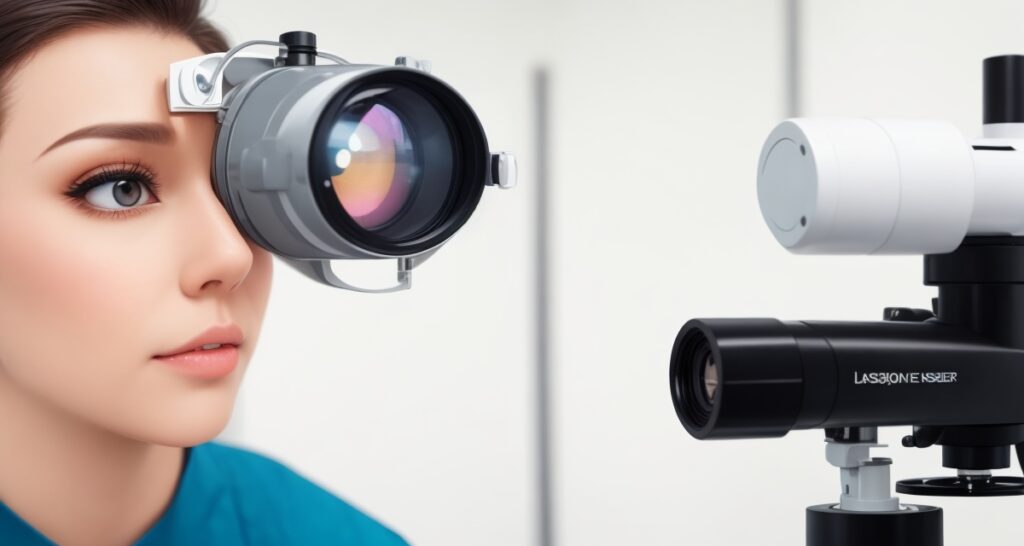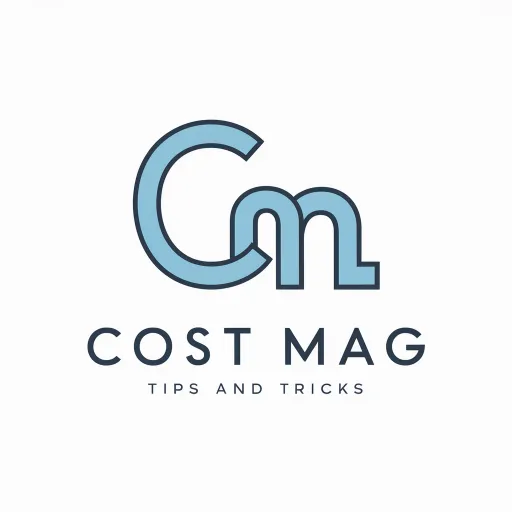In a world where eyeglasses and contact lenses have been the go-to solution for vision problems, Lasik eye surgery has emerged as a life-changing alternative. It is a procedure that can significantly reduce or even eliminate the need for visual aids.
LASIK, which stands for “Laser-Assisted in Situ Keratomileusis,” is a popular and effective vision correction procedure that has freed millions from the constraints of corrective lenses. One significant question often comes to mind when considering LASIK: “How much does it cost to get Lasik eye surgery?”
In this article, we’ll explore the various factors that influence the cost of LASIK surgery and help you understand what you can expect.
Average Cost of Lasik Eye Surgery

The average cost of LASIK eye surgery can vary significantly depending on several factors, including the technology used, the surgeon’s experience, and your geographical location. The general cost of the Lasik eye surgery varies from $2,000 to $3,000 per eye.
This cost is a general estimate and may not reflect the specific pricing at individual LASIK centers. The final cost of LASIK surgery is often determined during a consultation with a surgeon and is tailored to your unique needs.
Factors Affecting Lasik Eye Surgery Cost

The pricing of LASIK eye surgery can be influenced by various factors. Understanding these factors is important to determining the cost of the procedure. Here are the key elements that can affect LASIK pricing:
Technology and Equipment: The type of laser technology and equipment used during the LASIK procedure can significantly impact the cost. More advanced and up-to-date technology tends to be more expensive but can offer improved precision and better outcomes.
Surgeon’s Expertise: The experience and reputation of the surgeon performing the LASIK surgery are essential factors. Highly skilled and well-known surgeons may charge more for their expertise, but their track record often justifies the cost in terms of safety and successful outcomes.
Geographic Location: The cost of LASIK can vary by region and location. In major cities or metropolitan areas where the cost of living is higher, LASIK procedures may be more expensive compared to smaller towns or rural regions.
Prescription Strength
The severity of your vision problems and your prescription strength can impact the cost. More significant refractive errors may require more advanced LASIK techniques.
Astigmatism
If you have astigmatism in addition to nearsightedness or farsightedness, expect the cost to be slightly higher, as astigmatism correction requires additional expertise.
Eye Health
Patients with underlying eye conditions may require specialized LASIK procedures, which can affect the overall cost.
Customization: Some LASIK procedures are customized to address specific visual needs. Custom LASIK procedures, such as wavefront-guided LASIK or topography-guided LASIK, may come with a higher price due to the additional technology and expertise required.
Pre-Operative and Post-Operative Care: LASIK pricing may or may not include pre-operative and post-operative care. These services, which involve consultations, follow-up visits, and necessary medications, can add to the overall cost.
Enhancement Procedures: In some cases, patients may require enhancement procedures or additional surgeries to achieve their desired level of vision correction. The cost of these potential follow-up treatments should be discussed and considered.
Clinic Reputation: The reputation and credibility of the LASIK clinic or surgery center can influence pricing. Well-established clinics with a history of successful outcomes may charge more for their services.
Inclusions and Exclusions: Different LASIK providers offer varying levels of service in their pricing. Some may include all necessary pre-operative and post-operative care, while others may charge for these services separately. It’s essential to understand what is included in the quoted price.
Financing and Payment Options: LASIK providers may offer various financing options to make the procedure more affordable for patients. These options can affect the upfront cost and the terms of payment.
Special Offers and Discounts: Some LASIK centers offer promotions, discounts, or package deals. It’s worth inquiring about any special offers that might make the procedure more cost-effective.
To get an accurate estimate of the cost of LASIK surgery, it’s crucial to schedule a consultation with a reputable LASIK surgeon or clinic. During the consultation, the surgeon will assess your specific needs, evaluate your candidacy for LASIK, and provide a personalized price quote based on the factors mentioned above. This allows you to make an informed decision regarding your vision correction procedure.
FINANCING OPTIONS FOR LASIK

Health Insurance
Health insurance typically does not cover LASIK because it is considered an elective procedure. Some insurance plans offer vision coverage that can help reduce out-of-pocket costs.
Flexible Spending Accounts (FSA)
Many individuals use FSAs to cover LASIK costs. These accounts allow you to use pre-tax dollars for qualifying medical expenses, including LASIK.
Payment Plans
LASIK providers often offer financing options, allowing patients to spread the cost over several months or years, making it more affordable.
Stages of Lasik Surgery
Pre-operative Examination: Before the LASIK surgery, you will undergo a comprehensive eye examination and consultation with an experienced LASIK surgeon. During this examination, your eye health and vision correction needs will be assessed to determine your eligibility for the procedure.
Creating a Flap: On the day of surgery, you’ll be positioned under the laser. The surgeon will use an instrument called a microkeratome or a femtosecond laser to create a thin, hinged flap on the cornea, the clear front part of your eye.
Reshaping the Cornea: After the flap is created, a specialized excimer laser is used to reshape the cornea’s underlying tissue. This reshaping is tailored to your specific prescription, with the goal of improving your vision.
Repositioning the Flap: Once the cornea is reshaped, the surgeon repositions the corneal flap. The natural adhesion of the flap eliminates the need for stitches. The flap serves as a protective layer as the cornea heals.
Completion of the Procedure: The entire procedure typically takes around 15 minutes for both eyes. Only one eye is operated on at a time, with a short break in between if necessary.
Post-operative Care: After the procedure, you will spend a short time in a post-operative recovery area, where your eyes will be monitored. You will receive instructions for the immediate postoperative period, including using prescribed eye drops.
Post-Surgery Considerations

Follow-Up Visits:
After LASIK surgery, you’ll have scheduled follow-up visits with your eye surgeon. These visits are crucial to monitor your progress and ensure that your eyes are healing as expected. The timing of these appointments may vary but typically includes visits on the first day, one week, one month, three months, and six months after surgery. During these appointments, your surgeon will assess your visual acuity and overall eye health.
Protective Eyewear:
Your surgeon may recommend wearing protective eyewear, such as sunglasses or protective goggles, to shield your eyes from sunlight and debris during the initial recovery period. It’s essential to follow these recommendations to protect your eyes from potential irritation or damage.
Use of Prescribed Medications:
Your surgeon will provide you with a set of prescribed eye drops to reduce the risk of infection, minimize dryness, and promote healing. Adhering to the recommended drop schedule is vital for a comfortable recovery. Over-the-counter eye drops should be avoided unless recommended by your surgeon.
Avoid Rubbing Your Eyes:
To prevent complications and protect your healing corneas, avoid touching or rubbing your eyes during the recovery period. This can help prevent infection and displacement of the corneal flap.
Rest and Recovery:
During the first 24-48 hours following LASIK, it’s advisable to get plenty of rest and avoid strenuous activities. This allows your eyes to heal and minimizes the risk of complications. Most patients can return to their regular activities, including work, within a few days to a week after surgery.
Temporary Visual Effects:
Some patients may experience temporary visual effects, such as glare, halos, or starbursts around lights, especially at night. These effects typically subside as your eyes heal. Be patient, as it can take a few weeks or even months for your vision to stabilize fully.
Avoiding Swimming and Hot Tubs:
You should refrain from swimming in pools, hot tubs, or any bodies of water for at least one to two weeks after LASIK. This is to prevent contaminants from entering your eyes during the initial healing phase.
Protective Sleep Mask:
During the first few nights after LASIK, it’s recommended to wear a protective sleep mask to prevent accidental eye rubbing while you sleep.
Gradual Return to Physical Activities:
Strenuous activities, like heavy lifting and contact sports, should be avoided for at least a couple of weeks after LASIK. Be cautious and gradually reintroduce these activities after you receive clearance from your surgeon.
Report Any Concerns:
If you experience unusual or persistent discomfort, pain, redness, or vision changes, it’s essential to contact your surgeon immediately. These symptoms may signal a potential issue that requires prompt evaluation.
By following these post-surgery considerations and attending your scheduled follow-up appointments, you can increase the likelihood of a smooth and successful recovery after LASIK surgery. Remember that every patient’s experience is unique, so consult with your surgeon for personalized guidance tailored to your specific situation.
Activities and Lifestyle Considerations for Vision Correction
Vision Correction Method:
- LASIK Surgery: LASIK (Laser-Assisted in Situ Keratomileusis) is a surgical procedure that reshapes the cornea to correct vision problems like nearsightedness, farsightedness, and astigmatism.
- Glasses: Glasses are optical devices that correct vision by bending light before it enters the eye, compensating for refractive errors.
- Contact Lenses: Contact lenses are thin, prescription lenses that are placed directly on the eye’s surface to correct vision by altering the way light enters the eye.
Permanent vs. Temporary:
- LASIK Surgery: LASIK provides a permanent vision correction, as it physically alters the shape of the cornea.
- Glasses: Glasses offer a temporary solution to vision problems; they can be taken on and off as needed.
- Contact Lenses: Contact lenses also provide a temporary solution; they can be removed when not required.
Convenience:
- LASIK Surgery: After LASIK, there is no need for external vision aids, making it very convenient for daily life.
- Glasses: Convenient for those who prefer not to wear lenses directly on the eye, but they can be cumbersome and may require frequent cleaning.
- Contact Lenses: Provide a more natural field of vision compared to glasses, but require care, cleaning, and regular replacement.
Immediate Results:
- LASIK Surgery: Typically provides a rapid improvement in vision within a few days.
- Glasses: Offer immediate vision correction as soon as they are worn.
- Contact Lenses: Also provide immediate correction but may take some time to get used to wearing them.
Cost:
- LASIK Surgery: Generally more expensive upfront, but it eliminates the need for ongoing costs of glasses or contact lenses.
- Glasses: Initial cost is lower, but expenses may add up over time, especially if prescription changes or frames break.
- Contact Lenses: Ongoing costs for lenses, cleaning solutions, and occasional replacement can be significant.
Maintenance:
- LASIK Surgery: Requires minimal maintenance post-surgery, mainly routine eye care.
- Glasses: Need regular cleaning and may require adjustments or repairs.
- Contact Lenses: Require daily cleaning and replacement as per the prescribed schedule.
Activities and Lifestyle:
- LASIK Surgery: Provides freedom from glasses or contacts during sports, outdoor activities, and daily life.
- Glasses: These may interfere with certain activities or require additional sports-specific eyewear.
- Contact Lenses: Suitable for most activities, but can be uncomfortable in dry or dusty environments.
Risks and Side Effects:
- LASIK Surgery: Involves surgical risks and potential side effects such as dry eyes, glare, or halos, though these are usually temporary.
- Glasses: Virtually risk-free, with no surgical side effects.
- Contact Lenses: Carry risks of eye infections, discomfort, and, in rare cases, serious complications if not properly cared for.
These differences should help you understand the distinctions between LASIK surgery, glasses, and contact lenses, allowing you to make an informed decision about the best option for your vision correction needs.
Common Misconceptions About LASIK Costs
How Much Does It Cost To Get Lasik Eye Surgery?
LASIK is Always Expensive:
One of the most common misconceptions is that LASIK is always prohibitively expensive. While LASIK can be an investment, costs vary based on several factors, including the technology used, the surgeon’s experience, and the location of the procedure. Some LASIK centers also offer financing options, making it more accessible to a wider range of individuals.
Hidden Costs:
Some people believe that the quoted LASIK price covers all expenses. In reality, additional costs may include pre-operative and post-operative care, prescription eye drops, and potential enhancement surgeries. It’s essential for patients to inquire about these potential extra expenses during the consultation.
Insurance Coverage:
Many individuals assume that health insurance covers LASIK, but it is typically considered an elective procedure and not covered by most health insurance plans. Some vision insurance plans or Health Savings Accounts (HSAs) may provide coverage or tax advantages, so it’s worthwhile to investigate your options.
Higher Cost Equals Better Results:
Another misconception is that the most expensive LASIK procedure is always the best. While advanced technology and highly experienced surgeons may cost more, the cost alone does not guarantee the best results. Success depends on a combination of factors, including surgeon expertise and individual suitability.
Fixed Price for Everyone:
Some people think LASIK has a fixed, one-size-fits-all price. The cost of LASIK varies depending on each patient’s unique needs, including their prescription strength, the degree of correction required, and any additional services. This is why consultations are essential to determine an accurate price.
Cost Determines Quality:
While it’s essential to invest in a reputable LASIK provider, assuming that higher costs equate to better quality isn’t always accurate. Research and reading patient reviews can help assess a provider’s reputation and track record, which are essential factors in your decision.
Expensive Means Immediate Results:
Patients often believe that a more expensive LASIK procedure guarantees immediate, perfect vision. In reality, the time it takes to achieve optimal results can vary among individuals, and a successful outcome depends on various factors, including the body’s healing process.
LASIK is Not Affordable for Most:
LASIK is often considered an expensive luxury, leading some to believe it’s not attainable for the average person. With the availability of financing plans and more competitive pricing options, LASIK is becoming increasingly affordable for a broader range of individuals.
Conclusion
Lasik eye surgery is a transformative procedure that offers freedom from glasses and contact lenses. While the cost of Lasik surgery can vary, it is an investment in your long-term vision and quality of life. By understanding the factors influencing the cost, exploring financing options, and choosing a reputable provider, you can make an informed decision about this life-changing procedure.
FAQs
How painful is Lasik surgery?
Lasik surgery is virtually painless due to the numbing drops used during the procedure. Some patients may experience minor discomfort or dryness in the eyes, but this typically subsides quickly.
Is Lasik a one-time expense?
While the initial Lasik procedure is a one-time expense for many, some individuals may require enhancements or follow-up treatments, which can incur additional costs.
Are there any hidden costs in Lasik surgery?
Hidden costs are rare, but it’s essential to discuss all potential expenses, including pre-operative and post-operative care, during your consultation with the surgeon.
What if I’m not satisfied with the results?
Reputable Lasik providers often offer enhancement procedures if needed. Discuss this with your surgeon before the surgery.
Can I finance Lasik’s surgery?
Yes, many Lasik centers offer financing options to help patients manage the cost of the procedure. It’s a good idea to inquire about these options during your consultation.

